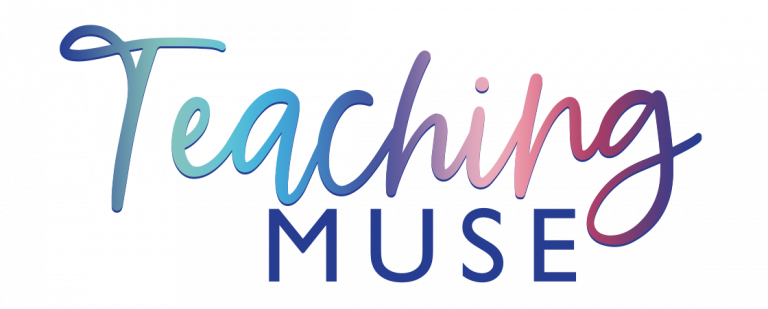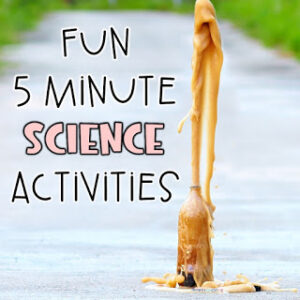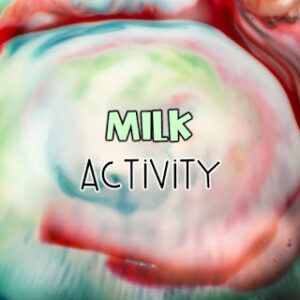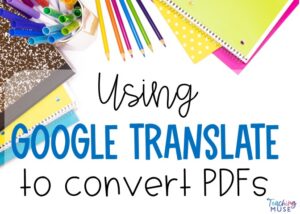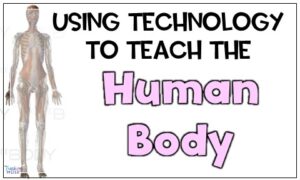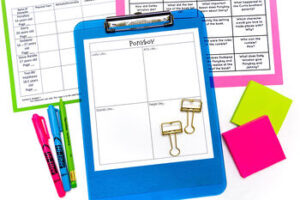Do you need quick science activities that will amaze and spark curiosity in your students? Five-minute science activities are what you need. These five-minute science activities can be tied into your curriculum to get your students thinking about why and how science makes it happen. In addition to tying into your curriculum, these five-minute science activities can be used on the first day of school to get students excited about science or on the last days of school to keep engagement and student behaviors on point.
Check out these five-minute science activities:
Floating M Lab:
I love M&Ms, so when I found a calorie-free way to include them in my classroom, I had to jump on it. This activity will teach students about water-soluble substances and how materials dissolve.
In this lab, you will need warm water, M&Ms, and a bowl.
Mentos and Coke:
If you can take your students outside, then this activity always WOWs students. This activity pairs well with a unit on chemical and physical changes.
For this lab, you will need a 2-liter bottle of diet soda and a package of mentos.
Note: You can use regular soda, but the sugars in regular soda will make clean up much stickier than diet soda.
To complete the activity is relatively simple:
- Find a safe spot outside to complete the experiment. Make sure the ground is flat so that the 2-liter bottle of soda won’t tip over.
- Open the soda bottle.
- Take out 7 Mentos from the package. You’ll want to drop them into the bottle of soda as close to the same time as possible. (You can preload them into a toilet paper roll to help do this as quickly as possible).
- Once the Mentos are in the soda, get away as quickly as possible.
- Observe the geyser effect.
Note: This activity is one that students will like to see again and again. There are a variety of ways to extend this activity by testing different variables. Some things you may want to try are:
The science behind this experiment: Mentos work so well for this experiment because the surface of the Mentos has tiny pits in it that allow the carbonation bubbles of the soda to attach to it. Once the Mentos are dropped into the soda, the carbonation bubbles adhere to it. The Mentos drop to the bottom of the bottle. The gas released by the Mentos pushes the liquid soda up and out of the bottle creating the beautiful geyser effect. This activity can be paired with your chemical and physical changes unit.
Lava Lamps:
How much fun are lava lamps? Do kids even know what a lava lamp is? Well, this super easy experiment will let them see the groovy coolness of a lava lamp.
For this activity, you will need: Glass, water (enough to fill the glass 3/4 full), food coloring (as many drops as you please), vegetable oil (enough to fill the jar 1/4 full), salt.
Directions:
- Fill the container 3/4 full with water.
- Add as many drops of food coloring as you want. I usually use 5-6 drops. Note: I rarely use yellow to avoid being told it looks like urine. (Insert eye-roll)
- Use the vegetable oil to fill the rest of the container. Wait for the water and oil to settle and layer on top of one another.
- Pour in salt and watch the lava lamp effect occur.
The science behind this experiment: Oil is less dense than water, so you will observe them layer upon one another. Salt is denser than oil and water. As the salt drops to the bottom, the oil comes with it. When the salt hits bottom, the oil floats back to the top of the container. Pair this activity with your density unit.
Magic Milk:
This is a great activity to use if you are teaching about the human body or chemistry. Milk, liquid dishwashing soap, and food coloring will amaze students and make a beautiful art project.
For this activity, you’ll need: A dish, enough milk to cover the bottom of the dish, food coloring, liquid dish soap, food coloring, and a cotton swab.
Directions:
- Pour enough milk to cover the bottom of the dish.
- Add drops of food coloring into the center of the dish. Use all different colors for a beautiful look.
- Dip the cotton swab into liquid dish soap.
- Place the cotton swab into the center of the milk dish. Hold it there for 10-15 seconds.
- Continue the fun by adding more dish soap to the end of the cotton swab.
The science behind this experiment: Milk is a liquid made up of fats, minerals, and proteins. The dish soap attaches to and breaks up the fats in the milk. As the fats break down, the soap is looking for other fats to adhere to. Pair this activity with your nutrition unit.
Soda Density:
Super easy and super tricky. Take one regular soda can and one diet soda can and put each in a container of water. What happens? One will sink, and the other will float. But why? That’s for your kids to figure out!
For this activity, you will need: One can of regular soda, one can of diet soda, one large container of water.
Directions:
- Show students the cans of soda. You may even want to pass them around. Students should observe that they are the same size and virtually the same except for the graphics outside the can. You may want to question the students by asking what they think will happen to the cans when placed in a container of water. Ask students to provide reasoning to back up their answers.
- Place the cans in the container of water. Observe.
The science behind this activity: The regular soda can sinks to the bottom of the container while the diet soda can floats. Soda contains 39g of sugar compared to 0.1g of aspartame found in diet soda. The sugar makes the regular soda denser than the diet soda, which is why it sinks. This is another great activity to pair with your density unit.
To further develop student understanding of the amount of sugar inside the soda can, you can measure out 39g of sugar and compare it to the 0.1g of aspartame. While this will demonstrate the amount of sugar used, a conversation should also explain what aspartame is and how the body breaks down the substance.
Looking for more ways to include hands on science in your classroom? Don’t forget to check out these other posts and grab the FREE science activity worksheets below.
Grab these FREE science activities by joining my science squad below!
